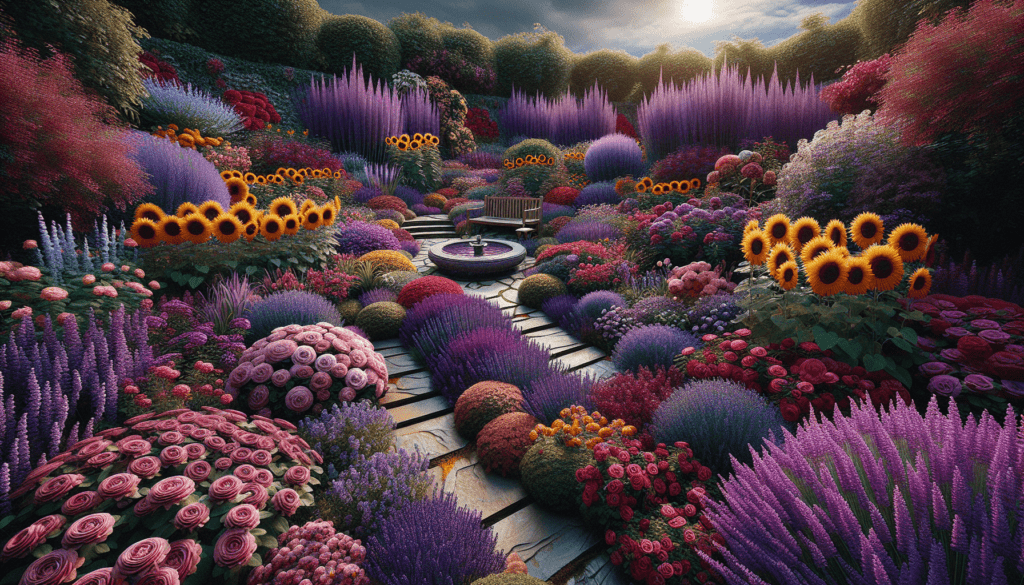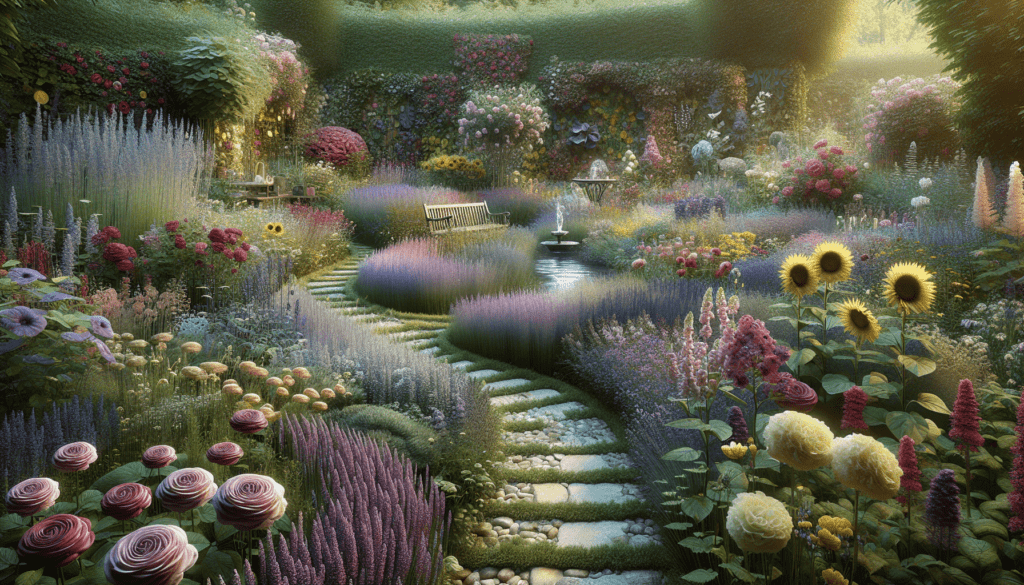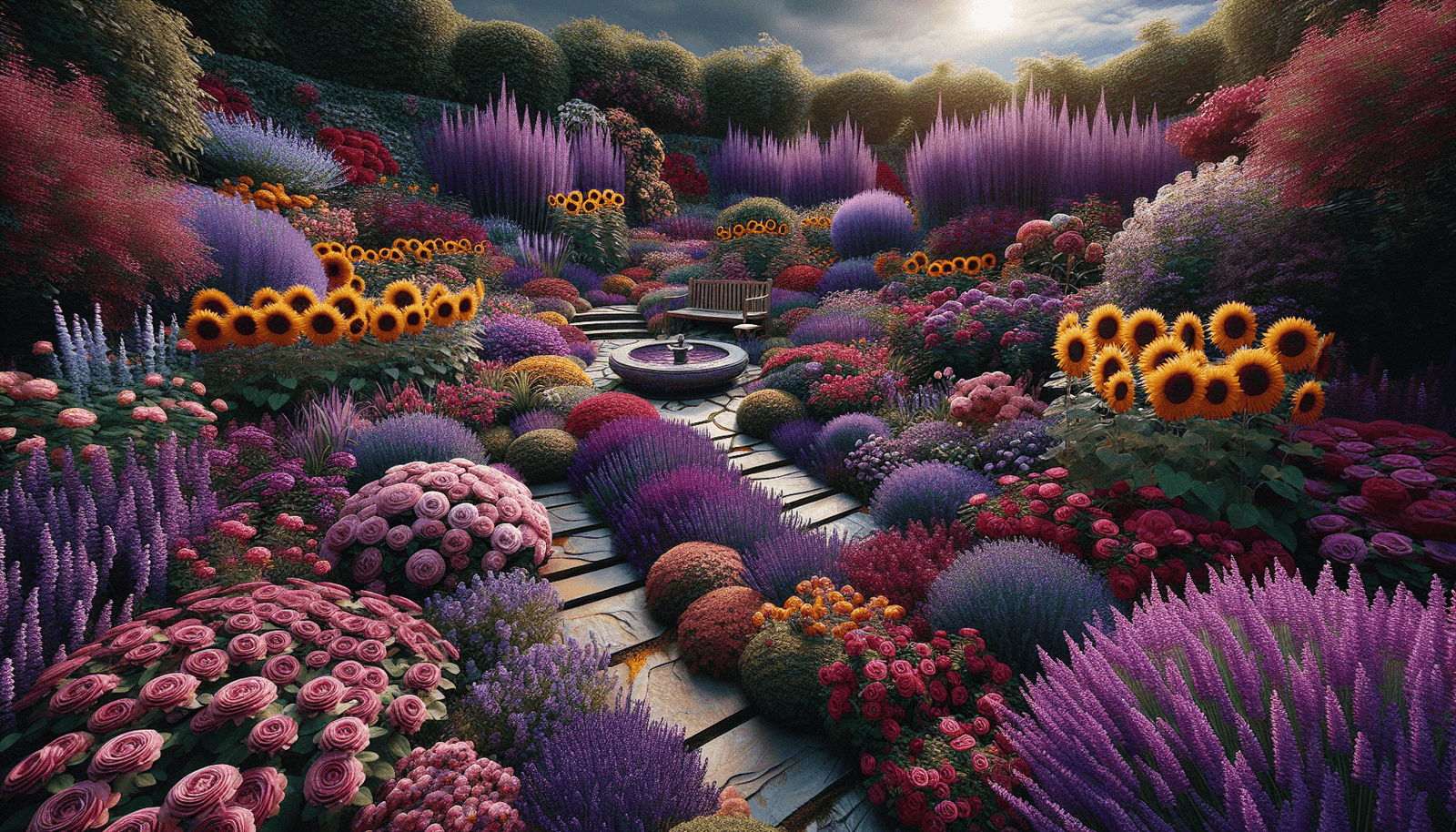Have you ever wondered how you can create a garden space that engages all of your senses? Dive into this article to learn about the essentials of designing a garden for sensory stimulation.

Understanding the Concept of Sensory Stimulation in Garden Design
When it comes to garden design, sensory stimulation goes beyond just visual appeal. It involves creating an environment that engages all five senses – sight, smell, touch, taste, and sound. By focusing on each of these senses, you can create a garden space that is not only visually stunning but also provides a multi-sensory experience.
Sight: Choosing Plants and Features for Visual Appeal
When designing a garden for sensory stimulation, consider the visual impact of your plant choices. Opt for a mix of colors, textures, and heights to create visual interest. Incorporate a variety of plant types, from flowering plants and shrubs to trees and ornamental grasses. Additionally, consider adding visually appealing features such as water features, sculptures, and pathways to enhance the overall look of your garden.
Smell: Selecting Plants for Fragrance
To engage the sense of smell in your garden, choose plants that are known for their fragrance. Some popular choices include lavender, roses, jasmine, and herbs like mint and basil. Plant these fragrant varieties near pathways, seating areas, or outdoor dining spaces to enjoy their scents up close. Consider incorporating a mix of scents to create a diverse olfactory experience throughout your garden.
Touch: Incorporating Texture into Garden Design
Texture plays a crucial role in sensory stimulation, especially when it comes to the sense of touch. Include a mix of plants with different textures, such as smooth leaves, rough bark, and soft petals. Consider adding tactile elements like fuzzy lamb’s ear plants, prickly cacti, or smooth river rocks to provide a variety of tactile experiences. Create designated areas for touch exploration, such as a sensory garden bed or a touch-friendly plant collection.

Taste: Growing Edible Plants for Culinary Enjoyment
For the sense of taste, incorporate edible plants into your garden design. Herbs like rosemary, thyme, and oregano not only add flavor to your meals but also release enticing aromas when touched. Grow vegetables and fruits like tomatoes, strawberries, and peppers to add a flavorful touch to your garden. Create a dedicated edible garden bed or integrate edible plants throughout your landscape for a tasty sensory experience.
Sound: Adding Elements for Auditory Stimulation
The sense of sound can also be stimulated through garden design. Incorporate elements like wind chimes, running water features, or rustling grasses to create soothing sounds in your garden. Consider planting trees that attract birds for natural sound effects, or install a small fountain or pond to enhance the auditory experience. By introducing these elements, you can create a harmonious environment that engages both the eyes and the ears.
Planning Your Garden Layout for Sensory Stimulation
When designing a sensory garden, careful planning of the layout is essential to ensure that all senses are engaged effectively. Consider creating distinct zones within your garden for each sense, such as a fragrant flower garden, a texture-rich plant area, or an edible garden bed. Incorporate pathways and seating areas to encourage exploration and relaxation, allowing visitors to fully immerse themselves in the sensory experience.
Creating a Sensory Garden Plan
Start by sketching out a rough plan of your garden space, including existing features like trees, fences, and paths. Identify areas where you can incorporate sensory elements such as fragrant plants, textured foliage, and edible crops. Consider the sun exposure, soil quality, and water availability in different parts of your garden to select plants that thrive in each area. By creating a detailed plan, you can effectively design a sensory garden that caters to all five senses.
Considering Accessibility and Safety
When designing a sensory garden, it’s essential to consider accessibility and safety for all visitors. Ensure that pathways are wide enough for wheelchair access and that seating areas are easily reachable. Avoid using plants that are toxic or have thorns near high-traffic areas, and install handrails or ramps for guests with mobility issues. By prioritizing accessibility and safety, you can create a welcoming environment that is inclusive for all.
Selecting Plants for Sensory Stimulation
The key to creating a sensory garden lies in choosing the right plants for each sense. Consider the following factors when selecting plants for your garden:
Sight:
- Choose a diverse mix of plants with varying colors, shapes, and sizes
- Incorporate seasonal blooms to create visual interest year-round
- Select plants with interesting foliage or bark for added texture
Smell:
- Opt for fragrant plants like roses, lavender, and jasmine
- Plant scented herbs like mint, basil, and thyme for culinary enjoyment
- Group fragrant plants together to create scent “zones” within your garden
Touch:
- Include plants with a range of textures, from soft and fuzzy to hard and spiky
- Incorporate tactile elements like smooth river rocks or rough tree bark
- Create designated touch areas where visitors can interact with different textures
Taste:
- Grow a variety of edible plants such as herbs, vegetables, and fruits
- Select plants that offer different flavors and aromas for a diverse culinary experience
- Integrate edible plants throughout your garden to encourage exploration and snacking
Sound:
- Add water features like fountains, ponds, or rain chains for soothing sounds
- Incorporate wind chimes, bamboo rustlers, or musical pipes for auditory stimulation
- Plant trees that attract birds for natural sound effects and wildlife enjoyment
Maintaining Your Sensory Garden for Long-Term Enjoyment
Once you’ve designed and planted your sensory garden, proper maintenance is crucial to ensure its continued enjoyment. Consider the following tips for maintaining your garden:
Regular Pruning and Trimming
- Keep plants well-maintained by pruning dead or overgrown branches
- Trim back foliage that may obstruct pathways or seating areas
- Shape plants to maintain their appearance and prevent overcrowding
Watering and Fertilizing
- Water plants regularly, especially during hot and dry periods
- Use organic fertilizers to nourish plants and promote healthy growth
- Monitor soil moisture levels to prevent overwatering or underwatering
Pest and Disease Control
- Inspect plants regularly for signs of pests or diseases
- Use natural or organic pest control methods to minimize damage
- Remove infected plants or affected parts to prevent the spread of diseases
Seasonal Cleanup and Plant Care
- Conduct seasonal cleanup to remove debris, fallen leaves, and dead plant material
- Prune plants in late winter or early spring to encourage new growth
- Mulch planting beds to insulate roots, retain moisture, and suppress weeds
By following these maintenance tips, you can ensure that your sensory garden remains vibrant, healthy, and enjoyable for years to come.
Conclusion
Designing a garden for sensory stimulation is a rewarding experience that engages all five senses and provides a multi-dimensional outdoor space. By incorporating elements that appeal to sight, smell, touch, taste, and sound, you can create a garden that offers a diverse sensory experience for yourself and others. With careful planning, plant selection, and maintenance, you can design a sensory garden that delights the senses and fosters a deeper connection with nature. Start planning your sensory garden today and embark on a journey of sensory discovery in your outdoor space.

